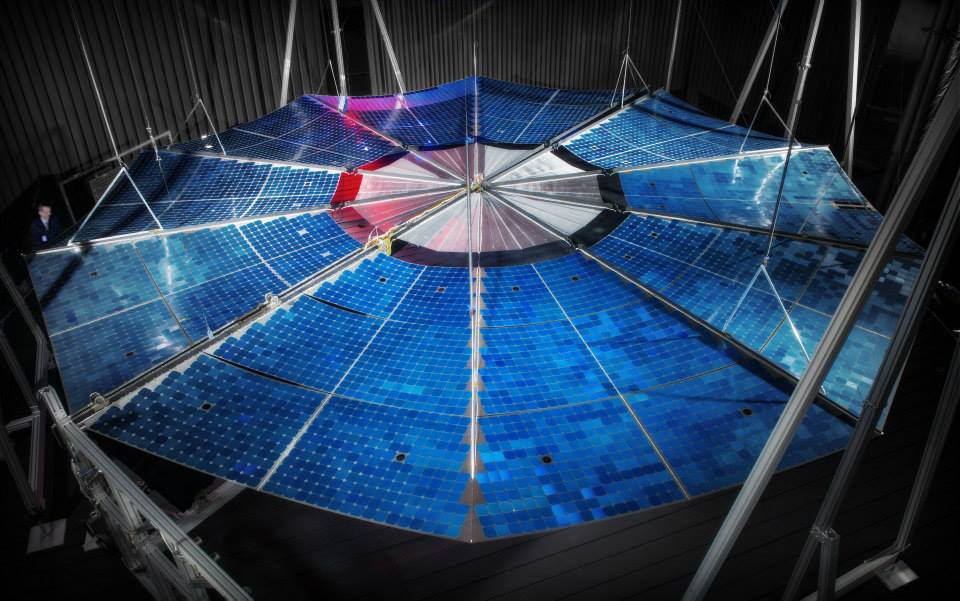
Eighteen months ago Alliant Techsystems (ATK) was awarded a $6.4 million Phase 1 Space Technology contract from NASA’s Space Technology Program to develop ultra-lightweight, high-power solar arrays for powering large-scale Solar Electric Propulsion (SEP) systems for future robotic and manned exploration missions, and last week the aerospace company announced they have successfully completed a series of rigorous testing of their new MegaFlex solar array wing.
“NASA’s over-arching objective is to further the development of low mass solar arrays that can be stowed very compactly for high-power SEP systems to be used for future robotic and manned exploration missions. MegaFlex is a game-changing technology that was not only developed to provide a needed capability, but also to be aligned with today’s budget climate,” said Dave Shanahan, vice president and general manager of ATK Aerospace Group’s Space Components division. “The completion of this testing validates the technology and allows us to support near-term missions that require very high power with a very lightweight advanced solar array.”
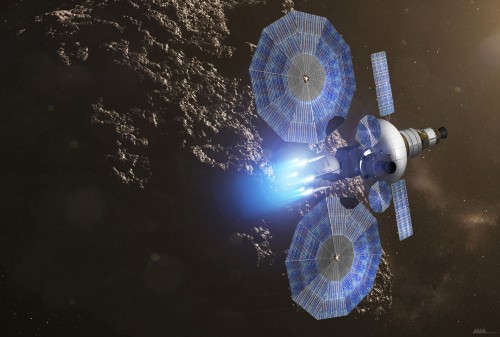
The 10-meter circular solar array design, developed by ATK’s Space Components Division of Goleta, Calif., is an accordion fanfold flexible blanket solar array comprised of interconnected isosceles-triangular-shaped lightweight substrates. Photovoltaic cells are bonded to the weave mesh blankets. When folded, the solar array is configured as a flat-pack to produce a compact launch volume and high system frequency. The circular membrane structure, which contains radial spar elements, becomes tensioned similar to an umbrella, resulting in a highly efficient, strong, and stiff structure which will provide high power, low mass, and small stowed volume for those future space missions it is being developed to support.
The tests, which were conducted at both ATK’s Goleta, Calif., facility and NASA’s Glenn Research Center Plum Brook Station in Ohio since December 2013, included “unassisted deployment of the full system between environmental exposures, stiffness and strength measurements, modal identification, launch vibration exposure, and deployments in vacuum at temperature extremes from +65°C to -65°C,” according to ATK. Now, with the MegaFlex technology and design demonstrated and validated, ATK has matured the MegaFlex solar array platform, together with unique high-voltage photovoltaic assemblies, resulting in a high technical readiness level poised to enable near-term, high-power missions and future missions as large as 400 kW.
“Technology development and demonstrations like this are critical to enable a broad segment of NASA’s roadmap for deep space exploration, as well as potential near-term government and commercial applications,” said Glenn’s Dr. Carolyn Mercer, Solar Electric Power Element Manager.
ATK has already developed a spaceflight-proven solar array that has been used by NASA for years called UltraFlex, and the MegaFlex design is based on the highly successful UltraFlex design which powered NASA’s Phoenix Lander on the surface of Mars in 2008 (and will also power the Mars InSight spacecraft landing in 2016). The UltraFlex solar array technology worked so well that it contributed to the Phoenix mission being extended past its “expiration date” three times, and other companies have also taken notice; Orbital Sciences Corporation has an order for 10 UltraFlex solar array wings, currently in production, to use on their Cygnus spacecraft for future Commercial Resupply Missions to the International Space Station for NASA (first Cygnus flight with the UltraFlex wings is scheduled to launch in early 2015).
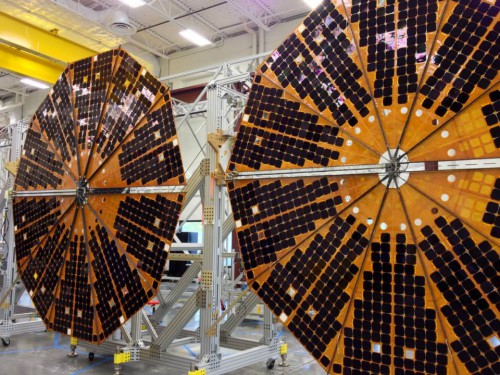
The key advancement from Ultraflex to Megaflex arrays is the way they are folded during launch. The stowed package is only 4.5 inches thick, which allows MegaFlex to fit optimally within tight launch fairings. The spar/panel pivot will reduce the stowed length, which is required during the unfolding to achieve the required panel radius. This would allow two scaled-up 200 kW Megaflex wings (resulting in a total power of 400 kW) to be compatible with potential mission platforms and currently available launch vehicles. Once perfected, MegaFlex will provide 10 times more power than current solar array technology in use is capable of.
“The exceptional performance of UltraFlex solar arrays and the high maturity level of the higher-power evolution of this flight-proven system positions MegaFlex to enable much larger SEP missions than ever before considered possible,” said Shanahan. “By building on our family of solar arrays, our team was able to develop this breakthrough with affordable innovation and in rapid fashion to support NASA’s far-reaching planning efforts.”
A flight demonstration version of the MegaFlex solar array technology is expected to be produced under a future Phase 2 contract to prove the technology works as expected in an actual spaceflight, and it is likely that NASA’s Orion spacecraft will utilize MegaFlex for the agency’s Asteroid Redirect Mission and other deep-space missions starting next decade when the SLS can support such flights beyond low-Earth orbit.
BELOW: Photos of the new MegaFlex solar array technology being developed by ATK. All photos credit: NASA | Chris Lynch








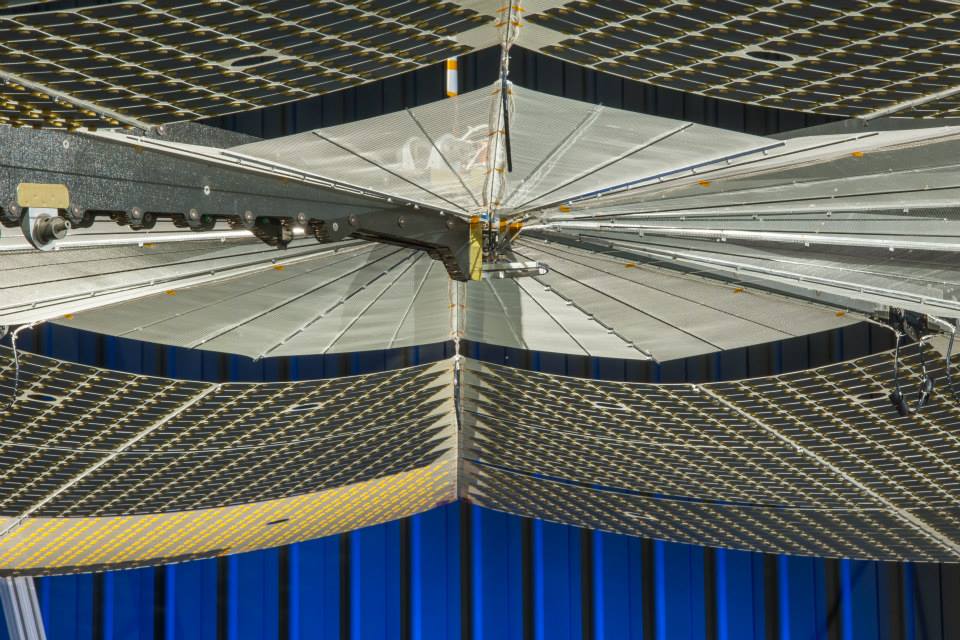
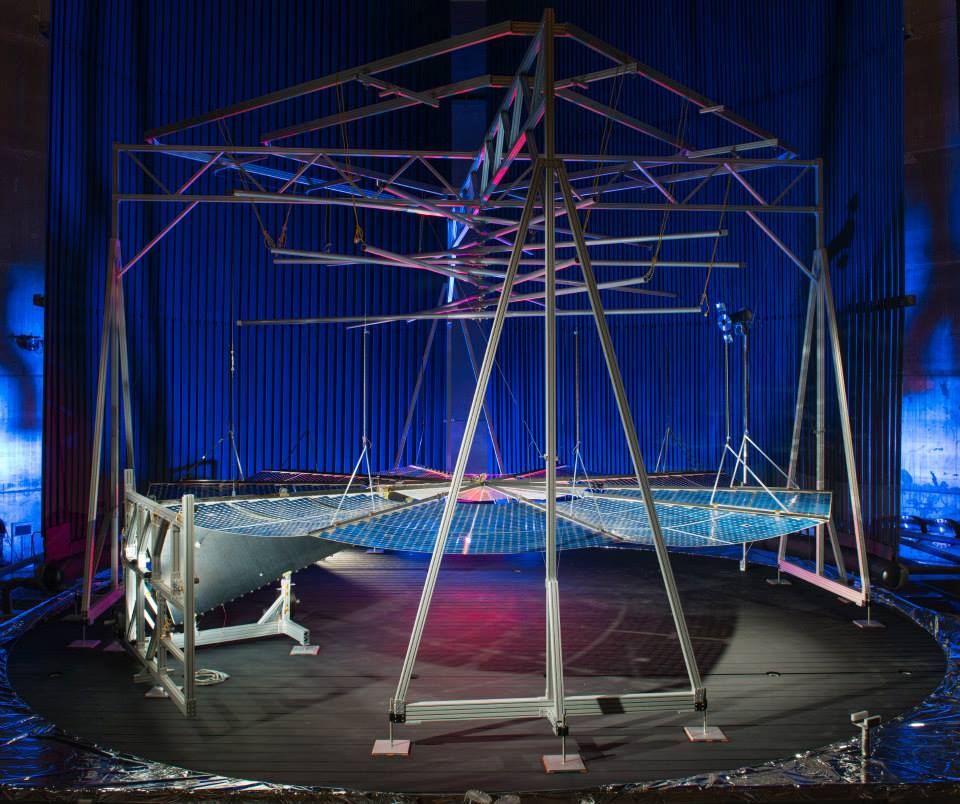
Want to keep up-to-date with all things space? Be sure to “Like” AmericaSpace on Facebook and follow us on Twitter: @AmericaSpace



